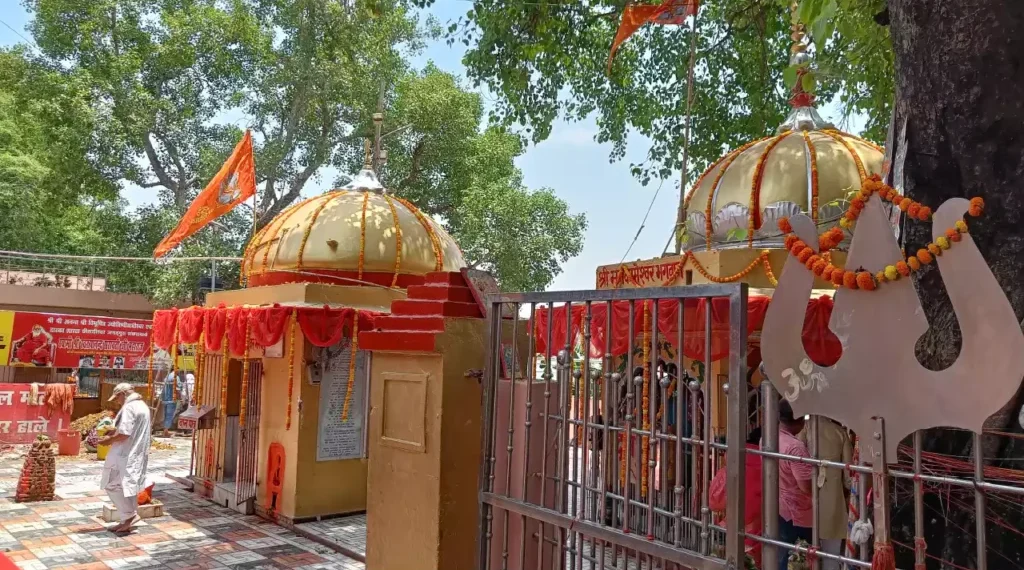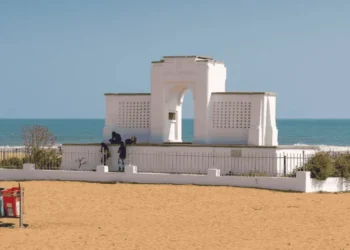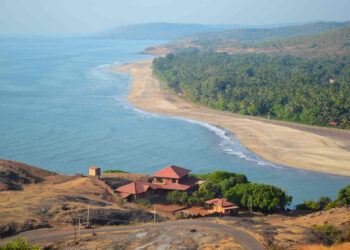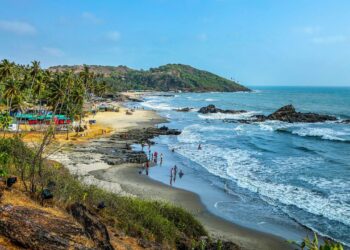In Rawatpara, Agra, Uttar Pradesh, near the Yamuna River, the Mankameshwar Mandir is a sacred place where folks come to pray to Lord Shiva. Mankameshwar Mahadev is believed to fulfill all kinds of wishes through worship. The ancient shrine of Lord Kameshwar, located at Brahmachari Ghat on the banks of the sacred confluence of the Khakra and Devh (Devahuti Ganga) rivers, honors Shiva, who is considered synonymous with Kameshwar. Where Shiva resides, Parvati, known as Mankameshwari, is also present.
History of Mankameshwar Mandir
The Mankameshwar Mandir is believed to have been established in the Dvapara Yuga, said to be by Lord Shiva himself. Agra, connected to ancient Hindu stories and Krishna’s birth in nearby Mathura, is a sacred city. Local tradition holds that Shiva visited to see baby Krishna and installed a silver-covered shivling here. Historical records list it as one of Agra’s oldest temples, dating back to the Dvapara era. In 2004, Shri Nanaji Bhai, head of Mathura’s Dwarkadhish Temple, added a Krishna idol.
The temple sits on level ground and is reached by descending 20 stone steps. British writers in the 1800s noted its large crowds. After India’s independence in 1947, a local trust took over its care. Renovations in the 1990s preserved its original appearance. Saints long praised Shiva’s glory here, making the temple well known. Today, many visit this sacred site in Agra.
Legends of Mankameshwar Mandir
The temple has many stories about Shiva and local beliefs. One says that during the Dvapara Yuga, Shiva left Mount Kailash to visit baby Krishna in Mathura. On the way, he stopped in Agra, meditated under a banyan tree, and set up a silver-covered shivling, promising to grant the wishes of those who pray here. The name Mankameshwar means “wish-fulfiller.” People believe praying with a true heart brings health, wealth, and peace.
Another story tells how Yashoda, Krishna’s mother, was afraid of Shiva’s fierce form and refused him at first. When Krishna cried and pointed to Shiva, Yashoda allowed Shiva to bless her son. Shiva then placed the shivling here. Locals speak of miracles, like finding peace or help after praying. A nearby banyan tree is also believed to hold Shiva’s hidden power.
Some say offering milk to the shivling seven times makes wishes come true. Many feel the temple’s air carries Shiva’s protective power, making it a place of care. On Shivratri, people believe Shiva’s spirit grows stronger here.
Rituals and Festivals
The temple comes alive for festivals. Shivratri, in February, is big, with all-night songs and milk offerings. Sawan, in July or August, honors Shiva with daily lamp offerings. The name Mankameshwar Mahadev itself means that no wish goes unfulfilled here. Devotees feel a deep sense of peace as soon as they enter the temple. Many come to pray for marriage or children, and when their wishes are granted, they offer Belpatra, Gangajal, milk, and other items to Baba. Even a simple pot of water is said to please him.
There is also a tradition of offering silver items like umbrellas, pairs of snakes, and tridents to Baba Mankameshwar. Devotees believe that silver offerings quickly win his favor, but Baba is pleased even with just a pot of water. Krishna Janmashtami, in August, sees Krishna’s idol decorated with flowers. Shivratri’s songs fill the yard with faith. The Yamuna ghat, said to wash sins, pulls crowds nearby. Folks offer milk, bel leaves, coconut, and special paans wrapped in silver foil, shaped like pyramids, sprinkled with coconut powder. Some chant the Shiva Tandava Stotra five times, taking 2 hours, for special wishes. Free meals feed 3,000–10,000 during festivals.
Information for Travelers
Hours and Entry: Open every day, summer: 4:40 AM to 10:30 PM; winter: 5:10 AM to 10:00 PM; Mondays till 11:00 PM. It’s free to go in, but prayers cost ₹20–150. No pictures in the main hall. One special feature of this temple is that even those who do not wish to enter can still see the silver-plated Shivling from outside.
However, only those wearing traditional Indian clothing like dhoti or sari are allowed near the Shivling. Inside the temple grounds, behind the main sanctum, there are several smaller shrines. Here, eleven akhand jyots (eternal lamps) burn continuously, fueled by desi ghee. When their wishes are fulfilled, devotees return to light a lamp, which can cost anywhere from one and a quarter rupees to one and a quarter lakh rupees.
How to Get There:
Air: Kheria Airport is about 8 kilometers away, with flights connecting to Delhi (around 1 hour) and Mumbai (around 2 hours). Taxis take approximately around 20 minutes to reach the temple.
Train: Agra Fort Station is 300 meters from the temple, with train connecting to Delhi (about 3 hours) and Lucknow (about 6 hours). Auto-rickshaws are available for local travel.
Road: Agra lies 230 kilometers from Delhi via the Yamuna Expressway. Buses run between Delhi and Agra. Auto-rickshaws operate within the city. Parking space is limited, and there is no parking available directly near the temple.
Best Time to Visit:
October to March is cool, 15–25°C. Weekdays are quiet. Shivratri and Sawan are busy, with 10,000–30,000 visitors, so come early.
Nearby Attractions
Taj Mahal: 3 km away, a Mughal tomb from 1648.
Agra Fort: 1 km away, a fort from Akbar’s time.
Mehtab Bagh: 4 km away, a garden to view Taj Mahal.
Final Words
Mankameshwar Mandir in Agra holds a special place in the hearts of devotees, blending rich history with enduring faith for millennia. As a symbol of divine grace in Agra, the temple remains one of the cherished around the area making it a must visit temple in Uttar Pradesh.











